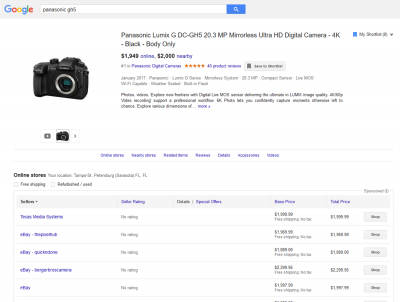3 pricing strategies that every online business should know


Imagine you’re at a store and you finally spot your dream blouse. In your mind, it’s yours already, but then you see the price. It’s just over your budget, but the fabric feels amazing and it fits perfectly. You simply can’t let go of it! There’s a good chance that you’ll end up buying it anyway, unlike when you shop online and you can’t really ‘experience’ the product. The price is also displayed right next to the blouse, so you can immediately decide whether or not it matches your budget. In a nutshell, the price is one of the main factors in online sales.

The importance of pricing when selling online
As mentioned above, pricing really is one of the main factors driving online sales. Not convinced? Have a look at a few hard facts below:
- Over 60% of online shoppers state that pricing is the main criterion when deciding whether or not to buy a product. In countries where e-commerce is just taking off, online prices are even more important to consumers.
- About 90% of online shoppers is good at finding offers. For each product they purchase they spend approximately 10 minutes thoroughly comparing prices before deciding in which online store they’ll place an order.
- Price-comparison websites have a big share in e-commerce marketing, since they take up about 20% of all e-commerce traffic. This share is even higher in product categories for which pricing is even more important, such as electronics.
3 online pricing strategies at a glance
When selling online, you need to take a closer look at your pricing strategy. Your prices should be competitive, customers should be prepared to actually pay those prices and you need to make enough profit to survive (after all, price is the only marketing tool that has a direct impact on your company’s turnover). So analyze your position on the market to get the most out of your pricing strategy. You can do this by combining various perspectives, as shown below.
Cost-driven pricing
From your company’s perspective
When you use cost-driven pricing, you take your expenses as the basis for determining your sale price. You look at your direct expenses (e.g. materials, raw materials and hours worked) and indirect costs (e.g. rent of your premises, internet costs, advertising expenses etc.) for the production and sale of your product, i.e. the cost price. Add the profit margin you’re after and you’ve got your sale price.
It may seem obvious, but surprisingly, many online merchants have no idea about their expenses for each product. They end up with a completely distorted balance between their own expenses and the final sale price.
A disadvantage of this method is that it doesn’t take account of your consumers and competitors. As such, a cost-driven pricing strategy only serves as a basis and is best used in combination with other e-commerce pricing strategies.
Competition-driven pricing
From your competitors’ perspective
As an online merchant, you face tough competition, particularly if you sell products that are also sold by other online stores. So don’t only look at your expenses and your preferred profit margin when setting your prices, but also find out your competitors’ prices. As explained at the beginning of the article, prices are important to consumers, who also like to compare. A competitive price is therefore a real must.
Competition-driven pricing doesn’t necessarily mean that your prices should be lower than those of your competitors, or that you should lower them to such an extent that you lose your entire profit margin. Is your price higher than that of your competitors? Then check what you can do in terms of service. Can you offer free shipping, quick delivery or a good returns policy? Then buyers might just be willing to pay a little extra!
Competition-driven pricing also entails that you can increase your prices, as long as you keep them lower than those of your competitors, e.g. when your expenses are lower than theirs.

Demand-driven pricing
From the customer’s perspective
The customer should take center stage in every aspect of e-commerce, including price setting. Demand-driven pricing means that the price is determined based on what potential buyers would be willing to pay for the product in question, and on the market demand – in other words, is the product in great demand?
Ask yourself the following questions:
- What is my company’s USP (Unique Selling Point)? Do I really provide added value that cannot easily be found elsewhere or do I offer something that can be bought elsewhere too, but at a cheaper price?
- Who are my customers? What do they think when looking at my products and do they follow their heart or their mind when deciding whether or not to buy my product?
Answer these two questions to have a better idea of your customers’ profile, so that you’ll know what to focus on. Consumers generally have an upper limit (the product is too expensive) and a lower limit (they no longer trust its quality) in terms of budget. The product itself also plays a role. For durable, valuable products focus more on communication and higher profit margins, and less on the price itself. When buying these products, consumers are driven by emotion rather than logic, so they care less about price comparisons or calculations. Companies selling everyday items that consumers can easily find elsewhere, on the other hand, need to focus more on their competitive advantage.
Conclusion: Take your time to focus on your pricing strategy!
The approaches listed above are three basic strategies, which work best when combined. Needless to say, you should always ensure all your expenses are covered. The next step is to have a closer look at who your competitors and potential customers are.
Make sure you keep optimizing your pricing strategy. Once your company changes or grows, you may need to apply a completely different pricing strategy. If you have a large store, it may be useful to rely on a third party to help determine your online pricing strategies to remain competitive and profitable in the long run. This software allows you to monitor your competitors, adjust your prices accordingly and conquer a better market position. Get started and build on your success!
